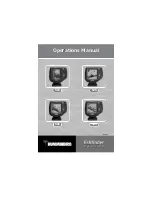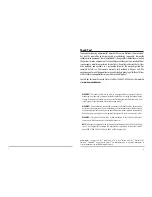
9
Structure ID®
represents weak returns as light
pixels and strong returns as dark pixels. This has the
benefit of ensuring that strong returns will be
clearly visible on the display.
WhiteLine®
highlights the strongest sonar returns
in white resulting in a distinctive outline. This
has the benefit of clearly defining the bottom on
the display.
Bottom Black
displays all pixels below the bottom
contour as black, regardless of signal strength.
This has the benefit of providing a high contrast
between the bottom and other sonar returns on
the display. Any targets such as fish, structure
and thermoclines will be shown using the Structure
ID method.
8
Bot
Bot
t
t
om Pr
om Pr
esen
esen
ta
ta
tion
tion
As the boat moves, the unit charts the changes in depth on the display to create a profile
of the
Bottom Contour.
The type of bottom can be determined from the return charted
on the display. A
Hard Bottom
such as compacted sediment or flat rock appears as a
thinner line across the display. A
Soft Bottom
such as mud or sand appears as a thicker
line across the display.
Rocky Bottoms
have a broken, random appearance.
The sonar returns from the bottom, structure and fish can be represented as either
Inverse
(default),
WhiteLine®
,
Structure ID®
, or
Bottom Black
. See
Sonar X-Press
Menu: Bottom View
for details on how to set the bottom view.
Inverse
is a method where weak returns are shown
with dark pixels and strong returns with lighter
pixels. This has the benefit of ensuring that weak
signals will be clearly visible on the display.
Bottom Contour Profile with
RTS® Window. Temp/Speed
Accessory is optional.
Rocky Bottom
Hard Bottom
Soft Bottom




























